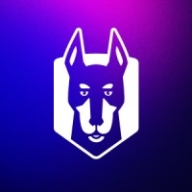

OpenText Real User Monitoring and Snyk are designed for different objectives within the tech industry, focusing on user experience and security, respectively. OpenText offers an edge with its cost-effectiveness and service orientation, while Snyk is favored for its advanced security features that cater to developer environments.
Features: OpenText Real User Monitoring provides comprehensive real-time user data analytics, detailed performance metrics analysis, and insights to enhance end-user experiences. Snyk includes vulnerability scanning, detailed vulnerability analysis, and robust integration capabilities with source control and CI systems, emphasizing its strength in ensuring software security.
Room for Improvement: OpenText could improve by offering more flexible customization options and better data visualization tools to enhance user insights and reporting. It could also broaden its integration capabilities with third-party tools. Snyk could expand its vulnerability database to include more comprehensive coverage of lesser-known libraries and reduce the rate of false positives. Additionally, improvements in user interface intuitiveness and lowering on-premises deployment costs would increase its usability.
Ease of Deployment and Customer Service: OpenText Real User Monitoring is appreciated for its straightforward deployment and consistently responsive customer service, aiding seamless system integration. Snyk also offers easy deployment with robust support for troubleshooting and security guidance, although OpenText's superior customer interaction offers a slight advantage in overall customer experience.
Pricing and ROI: OpenText Real User Monitoring is valued for its reasonable pricing and strong ROI thanks to actionable insights. Snyk has a higher upfront cost due to its specialized features but delivers significant long-term ROI for those emphasizing code security. OpenText is attractive to cost-sensitive businesses, while Snyk appeals to those focusing on security-first solutions.
| Product | Market Share (%) |
|---|---|
| Snyk | 0.3% |
| OpenText Real User Monitoring | 0.4% |
| Other | 99.3% |


| Company Size | Count |
|---|---|
| Small Business | 2 |
| Midsize Enterprise | 3 |
| Large Enterprise | 7 |
| Company Size | Count |
|---|---|
| Small Business | 20 |
| Midsize Enterprise | 9 |
| Large Enterprise | 21 |
Real User Monitoring (RUM) an End user monitoring that gives you visibility into user behavior for fast, targeted problem resolution. It monitors the performance and availability of business-critical application services for all users at all locations all the time. It automatically discovers underlying infrastructure and classifies user actions - giving you instant visibility into session and whole service health over web, cloud, and mobile user experience. It allows you to trace user experience across tiers, capture live sessions, see where customers clicked, measure response times, and see pages that caused problems. And you can easily capture and replay user sessions to create test scripts that reflect real user behavior. All this data gives you new ability to analyze which application transactions your users are performing and what application response they are experiencing. RUM currently supports over 20 application protocols and applications such as SAP, Citrix, and native mobile application monitoring on Android.
Snyk excels in integrating security within the development lifecycle, providing teams with an AI Trust Platform that combines speed with security efficiency, ensuring robust AI application development.
Snyk empowers developers with AI-ready engines offering broad coverage, accuracy, and speed essential for modern development. With AI-powered visibility and security, Snyk allows proactive threat prevention and swift threat remediation. The platform supports shifts toward LLM engineering and AI code analysis, enhancing security and development productivity. Snyk collaborates with GenAI coding assistants for improved productivity and AI application threat management. Platform extensibility supports evolving standards with API access and native integrations, ensuring comprehensive and seamless security embedding in development tools.
What are Snyk's standout features?Industries leverage Snyk for security in CI/CD pipelines by automating checks for dependency vulnerabilities and managing open-source licenses. Its Docker and Kubernetes scanning capabilities enhance container security, supporting a proactive security approach. Integrations with platforms like GitHub and Azure DevOps optimize implementation across diverse software environments.
We monitor all Application Performance Monitoring (APM) and Observability reviews to prevent fraudulent reviews and keep review quality high. We do not post reviews by company employees or direct competitors. We validate each review for authenticity via cross-reference with LinkedIn, and personal follow-up with the reviewer when necessary.